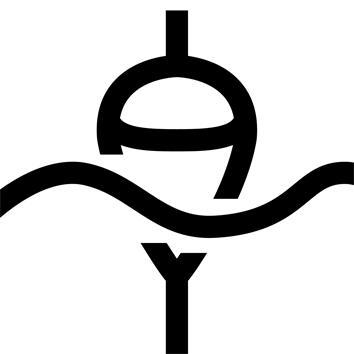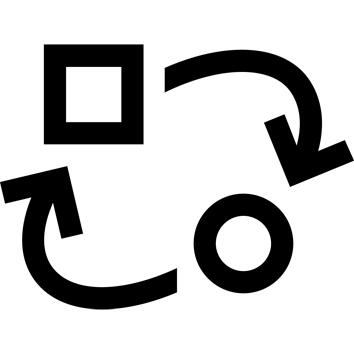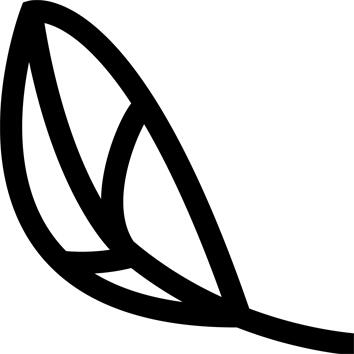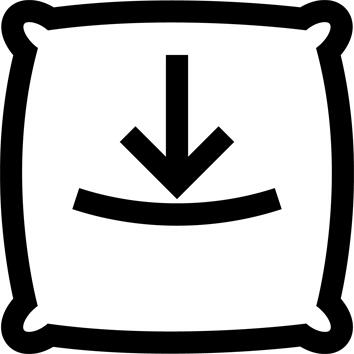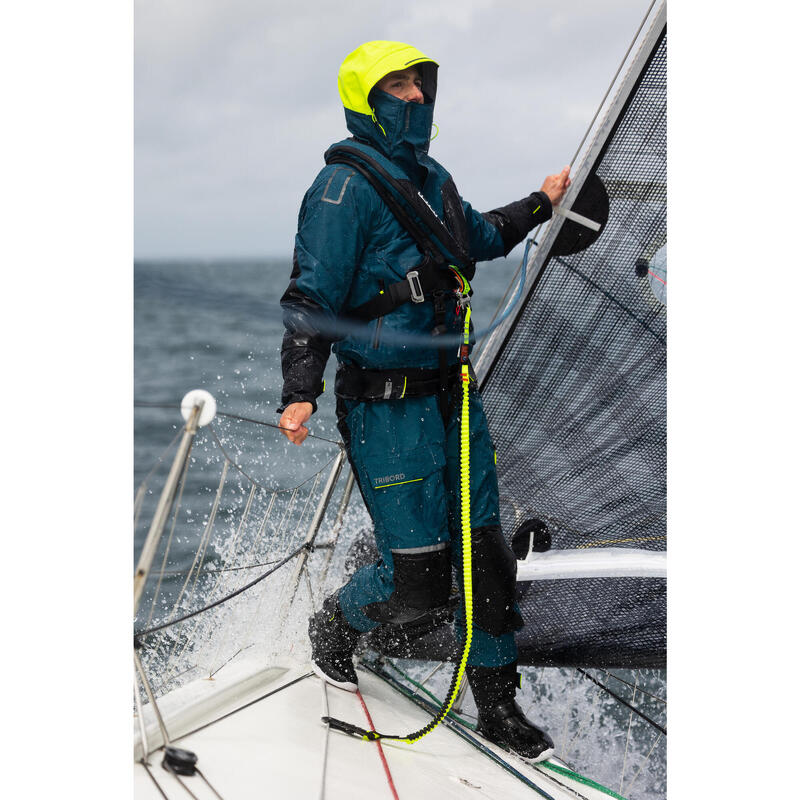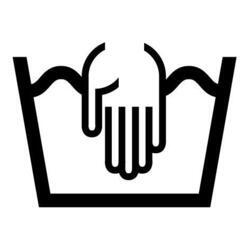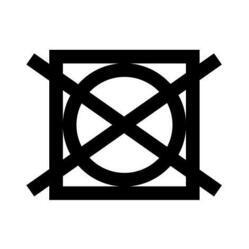Designed and validated in collaboration with French sea rescuers
This vest has been developed and validated in collaboration with French lifeguards.
Tribord and SNSM have been working together since 2020 on all phases of development, from initial specifications to prototypes and validation at sea.
This vest has been validated in the laboratory, on the water, and in day and night rescue situations.
A modular vest, for adapted safety.
Its innovative design allows you to switch from a vest to a lightweight offshore harness by simply pressing a reinforced YKK ZIP.
Whether you prefer to wear your harness alone in certain conditions, or are too hot in your vest but want to stay strapped in, this vest allows you to modulate your level of safety according to the context.
The vest meets ISO 12402-3 standards, and the harness ISO 12401. For offshore sailing, the standard requires a minimum of 150N. We have chosen to go beyond the standard with 180N.
A vest tested in offshore sailing gear
It has been designed for offshore sailing with a buoyancy of 180N, enabling an adult to float in full sailing gear.
An offshore suit (jacket, overalls, boots) can trap a large volume of air, which can limit rollover performance.
The asymmetrical pyramid structure of the bladder takes this factor into account to help roll an unconscious person in sailing gear onto his or her back, thus clearing the airway.
A vest designed for day and night searches
Signal your position, communicate:
- AIS placement on mouthpiece
- PLB beacon hook along bladder
- 2 VHF attachments on harness straps
Night visibility:
Position of reflective strips optimized to take into account the waiting position in the water
Orange bladder to facilitate daytime searches
"360" flashlight, positioned on the upper part of the bladder for 360° visibility of the search area.
How do you check your lifejacket before setting off? 1/2
- CO² cartridge: check for holes, corrosion and tightness
- Trigger (black): tightly screwed on, not expired, green cap present
- Firing pin (yellow): green seal (green triangle) present, indicating that the vest has not been triggered.
- Vest: complete and free of wear (tears, fraying), inflatable bladder stored in its cover.
How do you check your lifejacket before setting off? 2/2
In addition, on a regular basis (at least once a year):
- Inflate the vest using the mouthpiece, and leave inflated for 24 hours: the vest must not lose pressure
- Check the trigger's expiration date.
When do you need to replace the gas cylinder and firing pin (salt tablet)?
The dates on the CO² cartridge and the salt tablet have different meanings:
- Salt tablet = Expiry date, written as 05 2025 (for May 2025). It must be replaced once this date has passed. Model code for salt tablet: 8641190
- CO² cartridge = date of manufacture, written as 05 2021 (manufactured in May 2021): the cartridge must be replaced 5 years after this date. Model code for 38g cartridge: 8735531
How do you rearm your vest?
Please follow the order of assembly:
1. Dismantle the CO² pad and salt pad
2. Replacing the UML salt tablet (model code 8641190)
3. Replacing the 38-gram CO² cartridge (model code 8735531)
If you do not follow this assembly sequence, you run the risk of hitting the new cartridge if the salt tablet release system has been used previously.
Trigger operation
The LJ180N is equipped with a UML MK5 automatic celullose pellet release.
When water comes into contact with the pellet, it is inserted into the release cylinder to dissolve the cellulose pellet.
A spring is then released to strike the CO² cylinder and inflate the bladder.
Pressure on the bladder releases the YKK QUICK BURST ZIP, allowing the bladder to deploy.
The vest also features a pull tab for manual release.
ACCESSORIES
The vest is compatible with:
- a universal anti-mist hood in the collar.
- an AIS beacon
- a PLB beacon
- a VHF
None of these items are sold with the vest.
For which body types is this vest designed?
The 3D teardrop shape and trigger location have been optimized.
The vest is designed for users weighing between 40 and 130kg with a waist circumference of between 60 and 130cm.
Who should wear this vest?
This vest is suitable for a person weighing between 40 and 130 kg with a waist circumference of 60 to 120 cm and a maximum chest circumference of 120 cm.
Storage conditions
The trigger uses a UML salt tablet, which is sensitive to water and humidity.
Storage in damp, poorly ventilated and/or hot conditions may lead to condensation, causing the trigger to trip.
To avoid accidental triggering, we recommend that you ensure the vest is dry (inside and out) before storing it in a ventilated area.
Storage in damp, poorly ventilated and/or hot conditions may lead to condensation, causing the trigger to trip.
